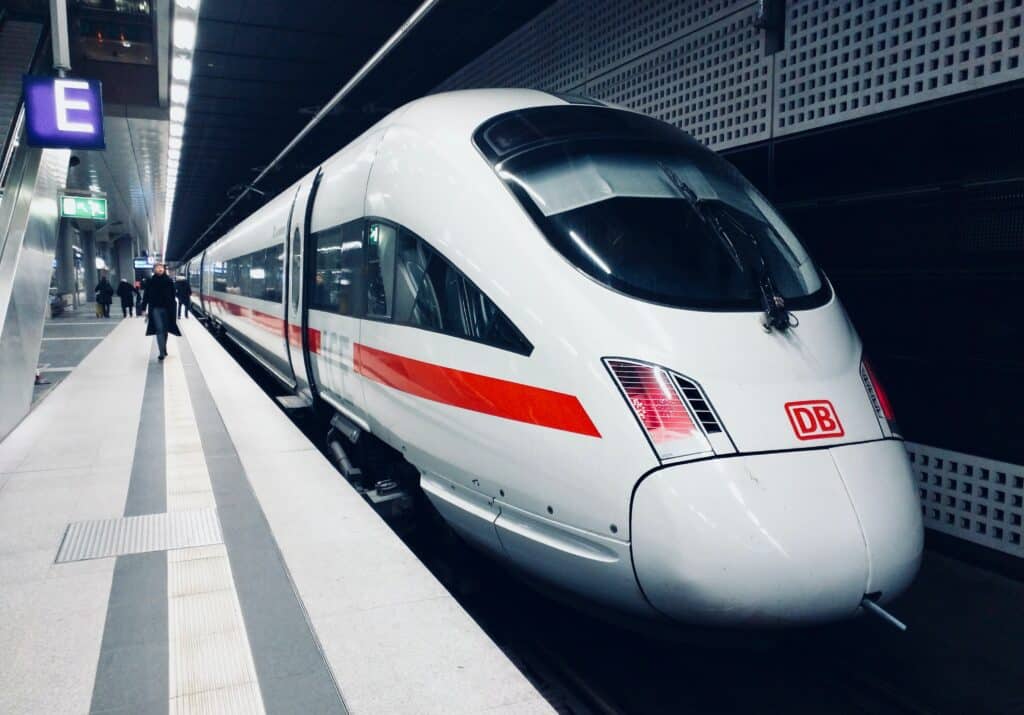Developing international passenger traffic: What can we learn from our experience with freight traffic corridors?
In this opinion piece Linda Thulin, President of the European Rail Freight Corridor Scandinavian Mediterranean (Scanmed), shares her thoughts on the synergies and lessons learnt from the development of international freight traffic corridors when it comes to establishing international rail passenger corridors.
This opinion piece by Linda Thulin, President of the European Rail Freight Corridor Scandinavian Mediterranean (Scanmed), originally appeared in the European Transport Regulation Observer ‘Towards International Passenger Corridors’ (May, 2021).
The need to develop international passenger traffic has many similarities and synergies with the need for international freight traffic corridors. In order to facilitate international travel, railway transport must be more easily accessible on an international level. It is ultimately the passenger or the transport buyer who chooses the transport options and transport modes. To make this possible, stakeholders in the railway industry need to cooperate, coordinate and jointly strive to make railways more accessible. The entire chain of players needs to reflect on ways to create new opportunities based on the market needs. Each country has developed solutions that work in the best way from a national perspective. However, increasing the share of international rail transport and thereby supporting the achievement of our climate goals, calls for greater willingness to compromise and identify common solutions from an international railway market perspective.
The Rail Freight Corridors (RFCs) are defined on the basis of regularly updated transport market studies. The freight corridors are located where there is a need for international freight flows. Today, commercial railway undertakings in the corridor run freely across borders and compete with each other on the basis of quality, flexibility, transit time, efficiency, prices etc. For instance, whereas transport services can be obtained at lower price, these could come at the expense of longer delivery times and uncertainty as to the goods’ arrival time. This means that if the freight corridor disappears, the established traffic would still remain, but it would probably be more difficult to manage, especially in the long run.
Can we create efficient capacity for the development of long-distance and cross-border passenger rail services over International Passenger Corridors?
The Rail Freight Corridor Scanmed supports and develops the possibilities together with terminals, ports and railway undertakings so that they, in turn, can create attractive transport solutions for the transport buyer.
An important part of this is meeting the market needs for attractive international capacity. A transport buyer needs stability and predictability over a long time period, but also flexibility to handle changes, and to choose rail as their transport mode. Transport buyers must be able to trust deliveries so that their production is not interrupted and store shelves do not become empty. Whereas a passenger can easily choose an alternative way of travelling, for the railway undertakings who invest in locomotives, waggons, among other resources, securing a seamless supply chain is a matter of survival.
Another aspect is that the railway undertakings need to have a good understanding of how to use the railway system and how it works in each country. There is already an international web-based capacity booking and allocation tool in place (PCS provided by RNE) that is used by railway undertakings. In the Rail Freight Corridor Scanmed, this has been tested and implemented, as well demonstrated between Norway and northern Germany. Passenger traffic also uses this for cross-border traffic. This type of IT solutions lowers the threshold for all applicants for entering the open access market. The capacity request is done in one system as one single request. This results in a fully coordinated cohesive path offer from all infrastructure managers.
Investments and maintenance are also needed in the infrastructure to ensure a smooth transport flow, to secure attractive capacity and to meet the need for increasing transport demand. In parts, investment plans tend to meet national and regional needs and focus primarily on major investments. But when they are pooled together, this creates “islands” of investments for the railway undertaking and fail to facilitate a smooth international traffic flow. There is a need for better coordination and planning of both minor and major investments, based on the market needs for international traffic flows.
Can we make progress in digital platforms for on-line search and ticket purchase, including through ticketing?
Imagine a transport buyer who has a need for a transport while contributing to the climate goals by using the railway system, though has limited knowledge of the workings of the railway system. To whom do you turn? Most people turn to logistics companies via the web to request a complete transport solution. The railway is often not even an option. Most often, the transport buyer is referred to a railway undertaking, which in turn must also find a joint solution together with a terminal, port and others. How could the information become available so that it can be offered in the same system? Digitalisation in each step of the logistics chain, easy access to collective information platforms and the exchange of digital information are necessary, so as to ensure that passengers and transport buyers easily choose the railway option. The only way for an international freight operator to access this kind of information is through the Rail Freight Corridors, which will offer a more complete solution.
In Rail Freight Corridor ScanMed, the coordination of some major traffic disruptions has enabled us to gain a better understanding of what can be improved. Some form of agreement would be needed between the railway undertakings to ensure a smooth cooperation enabling the affected goods to reach their destination even during disruptions. Reliable contingence management guarantees that passengers and transport buyers are affected to a minimal extent by occurring disruptions so that rail can remain their transport mode of choice.
Within the airline sector, several “Alliances” cooperating in the context of customer care are well-established. Similar concepts could be developed in the railway sector for both freight and passenger traffic. How would the continuation of a journey be secured for a passenger who buys an international trip with a railway undertaking in the event of a disruption? Would the railway undertaking of a connecting rail service offer free rebooking in the same way as a flight operator on a connecting flight would do? Is it also possible for the railways to get there? To compete with the air market on suitable distances, this will be a necessity.






